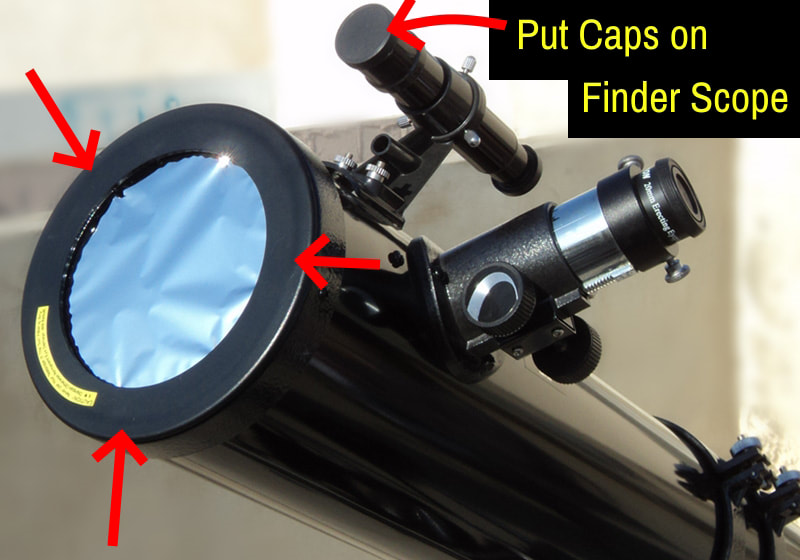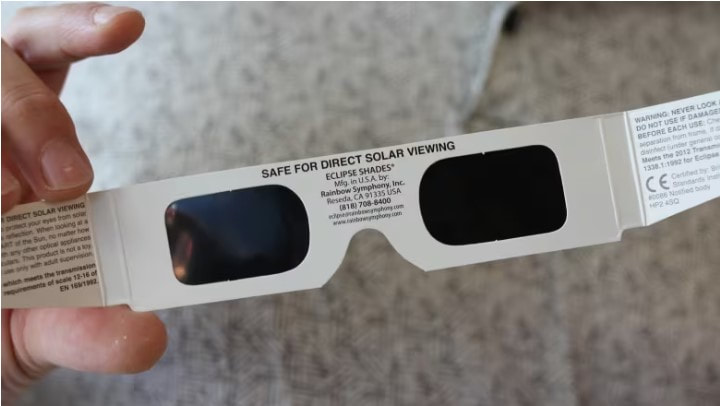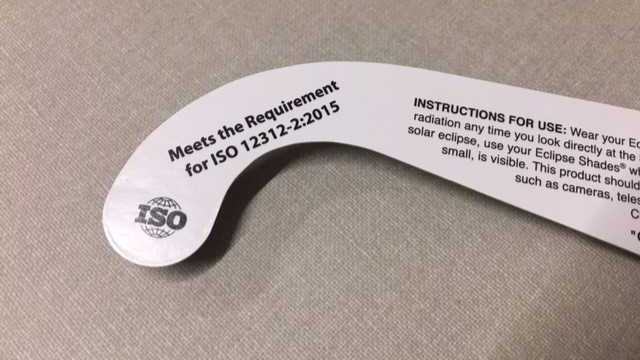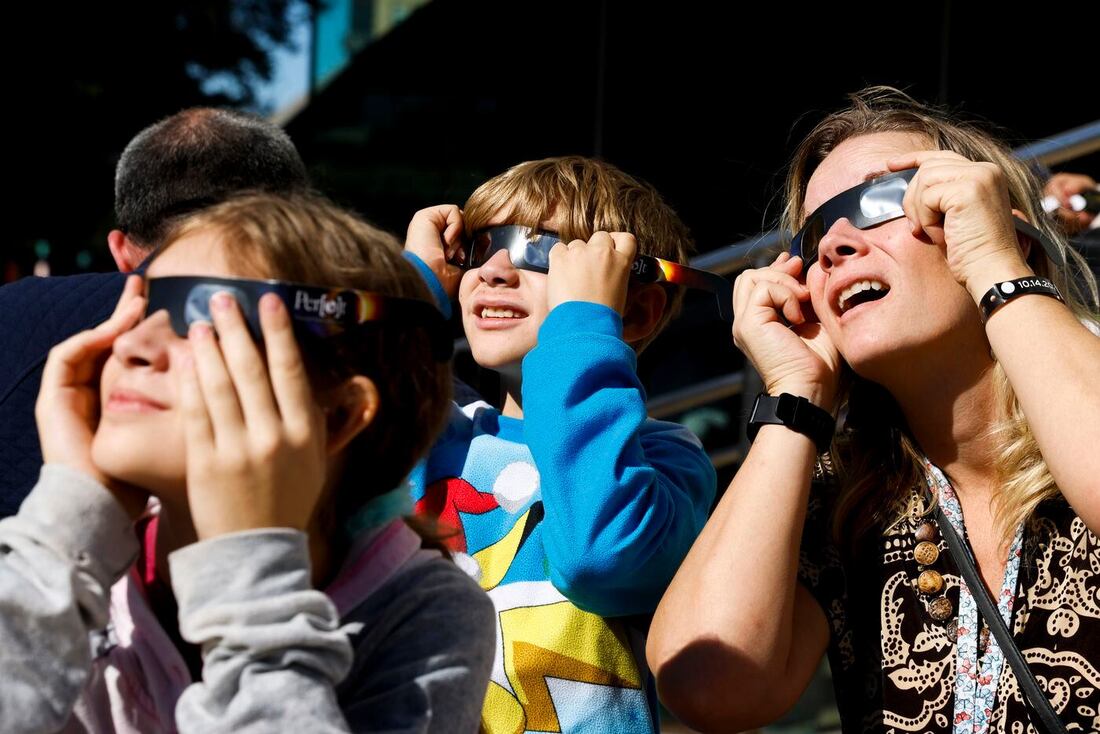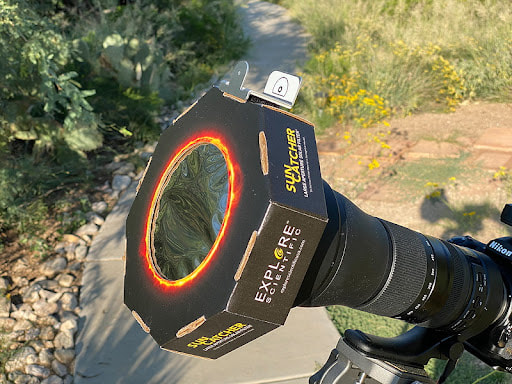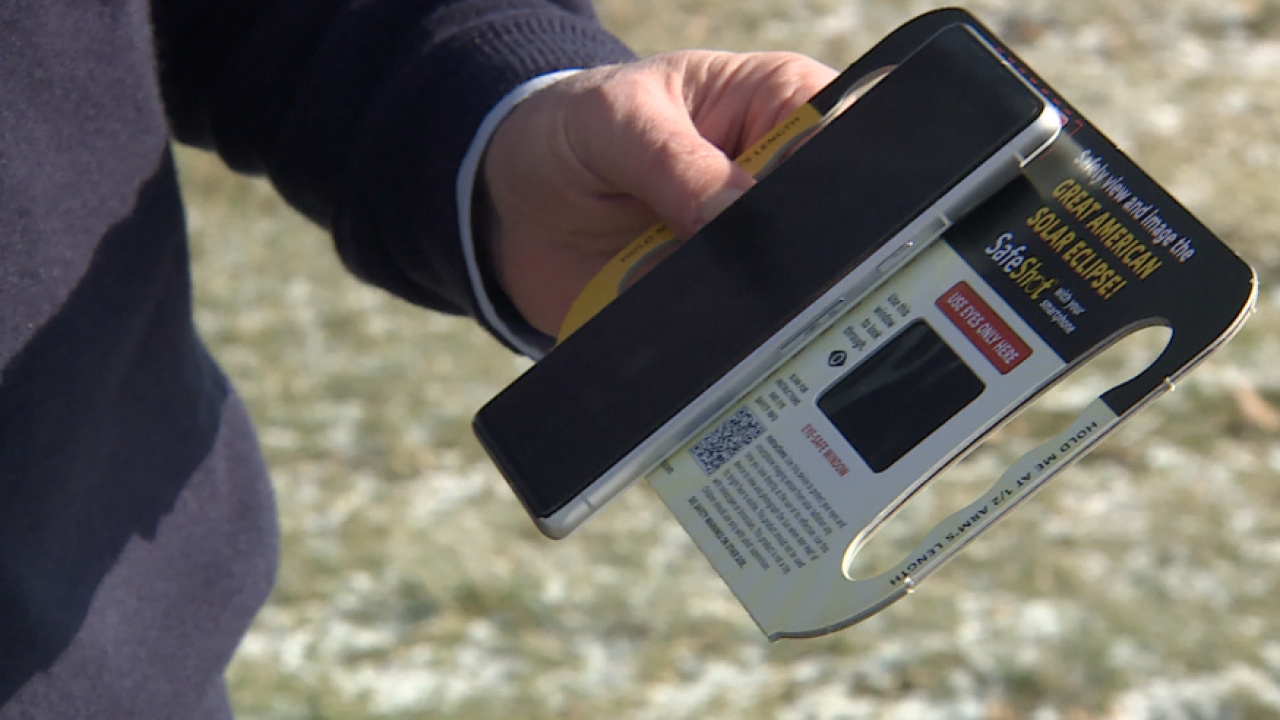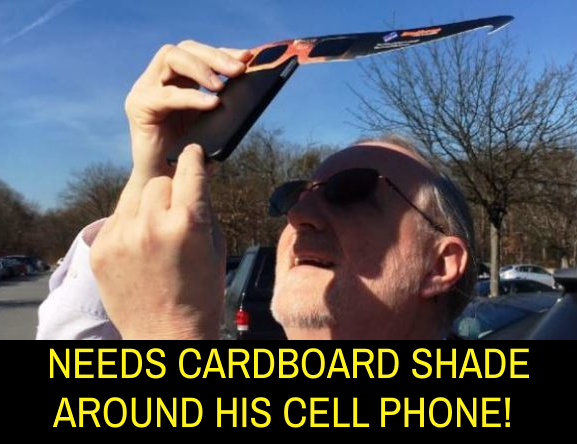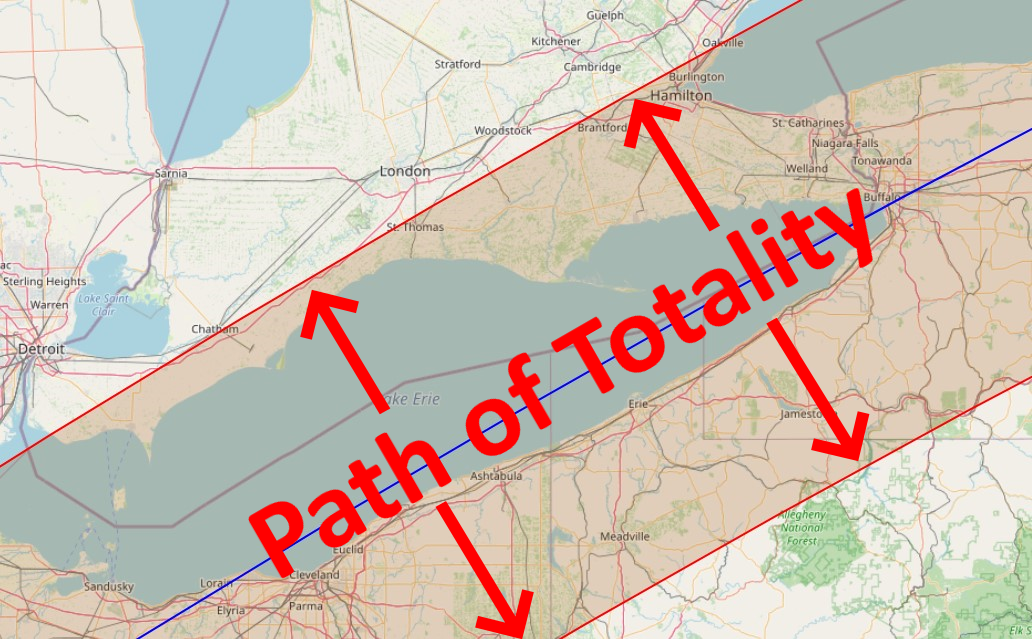How to View a Solar Eclipse Safely
How to Use Solar Viewers | Indirect Viewing Methods | Do Solar Viewers Expire? | Cleaning Instructions | Welding Filters
A solar eclipse occurs when the Moon blocks any part of the Sun's bright face. On Monday, April 8, 2024, a solar eclipse will be visible (weather permitting) across nearly all of North America. All 10 provinces and 3 territories will experience at least a partial solar eclipse, as will all of the U.S., Mexico, and all countries in Central America. Anyone within a roughly 115-mile-wide path across Mexico, from Texas through Maine, across parts of Southern and Eastern Canada will experience a total solar eclipse, one of the most spectacular sights in all of nature.
During a partial or total solar eclipse, such as the one on April 8th, looking directly at the Sun is unsafe except during the brief total phase ("totality"), when the Moon entirely blocks the Sun’s bright face, which happens only within the narrow path of totality. At all other times, it is safe to look directly at the Sun only through special-purpose solar filters that comply with the transmittance requirements of the ISO 12312-2 international standard. To find out whether your home or any other location lies within the roughly 115-mile-wide path of the April 8, 2024, total solar eclipse, see Xavier Jubier's Google Map.
During a partial or total solar eclipse, such as the one on April 8th, looking directly at the Sun is unsafe except during the brief total phase ("totality"), when the Moon entirely blocks the Sun’s bright face, which happens only within the narrow path of totality. At all other times, it is safe to look directly at the Sun only through special-purpose solar filters that comply with the transmittance requirements of the ISO 12312-2 international standard. To find out whether your home or any other location lies within the roughly 115-mile-wide path of the April 8, 2024, total solar eclipse, see Xavier Jubier's Google Map.
Ordinary sunglasses, even very dark ones, are not safe for looking at the Sun; they transmit far more sunlight than is safe for our eyes. ONLY VIEWERS VERIFIED TO BE COMPLIANT WITH THE TRANSMITTANCE REQUIREMENTS OF THE ISO 12312-2 INTERNATIONAL SAFETY BOARD ARE RECOMMENDED FOR SAFE DIRECT VIEWING OF THE SUN.
Instructions for the Safe Use of Solar Filters/Viewers
|
Instructions for All Solar Eclipses
|
- Additional Instructions for the Total Solar EclipsePath of 2024
|
If you are inside the path of totality on April 8, 2024, remove your solar filter only when the Moon completely covers the Sun’s bright face and it suddenly gets quite dark. Experience totality, then, as soon as the bright Sun begins to reappear, replace your solar viewer to look at the remaining partial phases. Note that this applies only to viewing without optical aid (other than ordinary eyeglasses). Different rules apply when viewing or imaging the Sun through camera lenses, binoculars, or telescopes; consult an expert astronomer before using a solar filter with any type of magnifying optics.
|

Outside the path of totality, and throughout a partial solar eclipse, there is no time when it is safe to look directly at the Sun without using a special-purpose solar filter that complies with the transmittance requirements of the ISO 12312-2 international standard.
Not everyone in a family or other group of observers needs their own eclipse glasses or handheld solar viewer. A partial solar eclipse, and the partial phases of a total solar eclipse eclipse, progress quite slowly; there’s no point in watching continuously. If you instead take a brief glance every few minutes, the motion of the Moon across the Sun’s face will be readily apparent. There’s plenty of time to share a small number of solar viewers among a large group.
What If You Don't Have a Safe Solar Filter/Viewer?

An alternative method for safe viewing of the partially eclipsed Sun is indirectly via pinhole projection. For example, cross the outstretched, slightly open fingers of one hand over the outstretched, slightly open fingers of the other, creating a waffle pattern. With your back to the Sun, look at your hands’ shadow on the ground. The little spaces between your fingers will project a grid of small images on the ground, showing the Sun as a crescent during the partial phases of any solar eclipse. Or just look at the shadow of a leafy tree during a partial eclipse; you'll see the ground dappled with crescent-shaped Suns projected by the tiny spaces between the leaves. A colander makes a terrific pinhole projector, as does a straw hat, a perforated spoon, or anything else with lots of small holes in it. Do not look at the Sun through the pinhole(s)!




